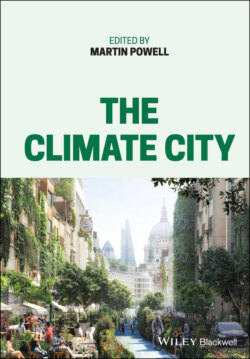Читать книгу The Climate City - Группа авторов - Страница 46
Jerusalem
ОглавлениеThe holiest place in Judaism is Temple Mount in Jerusalem where the last remnant of the Second Temple, the outer Western Wall, stands. Each year, thousands of people, of all faiths and levels of religious observance, flock to the Western Wall (also referred to as the Wailing Wall) to pray, sight-see, and hopefully learn for themselves the incredible story behind this site.
The Western Wall is the last remnant of the Second Temple, meaning that before the Second Temple there was also a First Temple. The First Temple was built in 1000 BCE by King Solomon in the years after King David conquered Jerusalem and made it his capital, but the city was captured by the Babylonians and the Temple was then destroyed in 586 BCE.29 In 538 BCE, the Jews returned from their exile to Jerusalem, and by 515 BCE they had built the Second Temple. The Second Temple spanned three significant historical periods: the Persian period, the Hellenistic period, and, finally, the Roman period.30 During the Roman period it was eventually destroyed by Titus, along with the city of Jerusalem. Jewish tradition tells us that both temples were destroyed on the Ninth of Av on the Jewish calendar (usually July or August on the Gregorian calendar). Every year the destructions are commemorated by a day of mourning called Tisha B’Av.
Nowadays, the Western Wall is all that remains, and it stands at Temple Mount alongside the Al-Aqsa Mosque, the third-holiest site in Islam, and the gold-topped Dome of the Rock, one of the most famous symbols of Jerusalem. It is also in close proximity to the Church of the Holy Sepulchre, synagogues, and mosques. The site has become the seat of the three Abrahamic faiths – Judaism, Islam, and Christianity – and a symbol of a diverse, tolerant, and international city (Figure 2.5).
Figure 2.5 Jerusalem, the only city to exist twice – in heaven and on Earth. (Source: Josef/Adobe Stock)
This architectural palimpsest tells the extraordinary story of Jerusalem through a single structure. The cycle of destruction and reconstruction, of survival and preservation, is inherently hopeful and inspirational to the cities of today. Jerusalem is a resilient city. The city employs strict security, and behavioural measures are taken to protect the integrity of Temple Mount. The site itself has also proved helpful in attracting tourism, with it often being listed on various “Top Ten” things to do in Jerusalem, which by extension has provided economic benefits to the city.
In recent years the Western Wall has also become the place of social action on the subject of women’s equality. For many years, ultra-orthodox men opposed women praying at the Wall, sometimes going as far as violently dispersing dedicated women’s prayer services. The Wall itself is split into two sections. The larger section is dedicated for men, and the second, much smaller, section is dedicated for women’s prayer. An advocacy group called Women of the Wall was founded, and in 2016, the Israeli government approved the creation of an egalitarian prayer space where non-Orthodox men and women could pray at the Wall31 – a clear victory in the fight towards equality.
Jerusalem is the template for multifaith living in a small urban space, a place that has learned to be tolerant but has had to move with the times and be inclusive to all.
